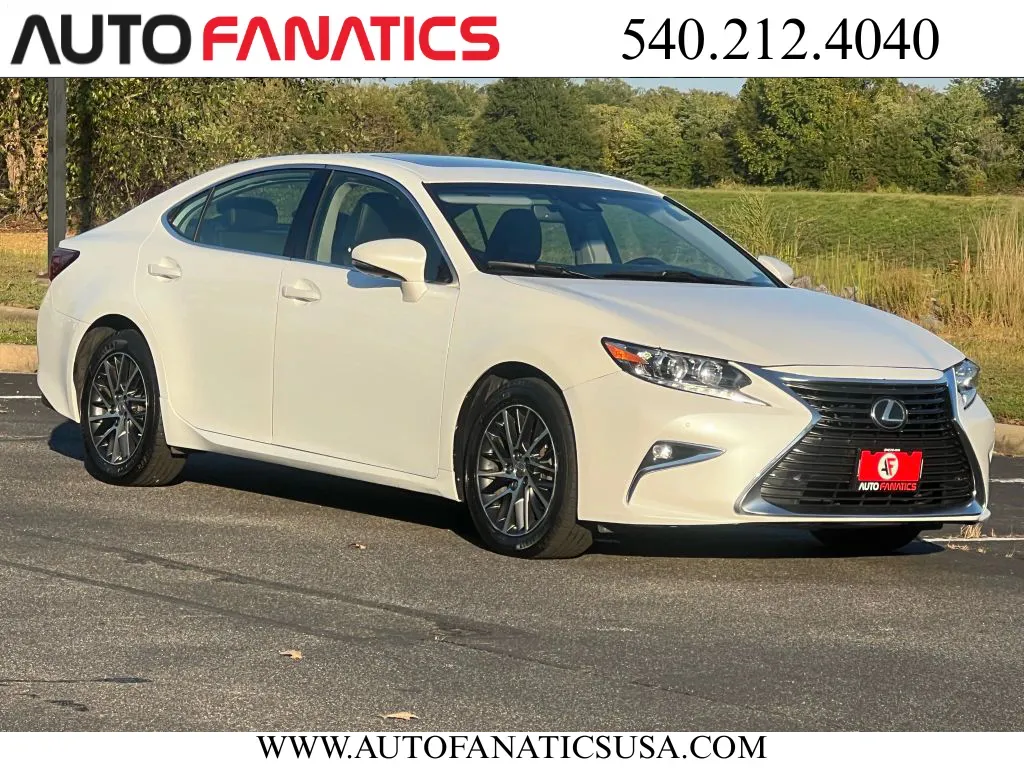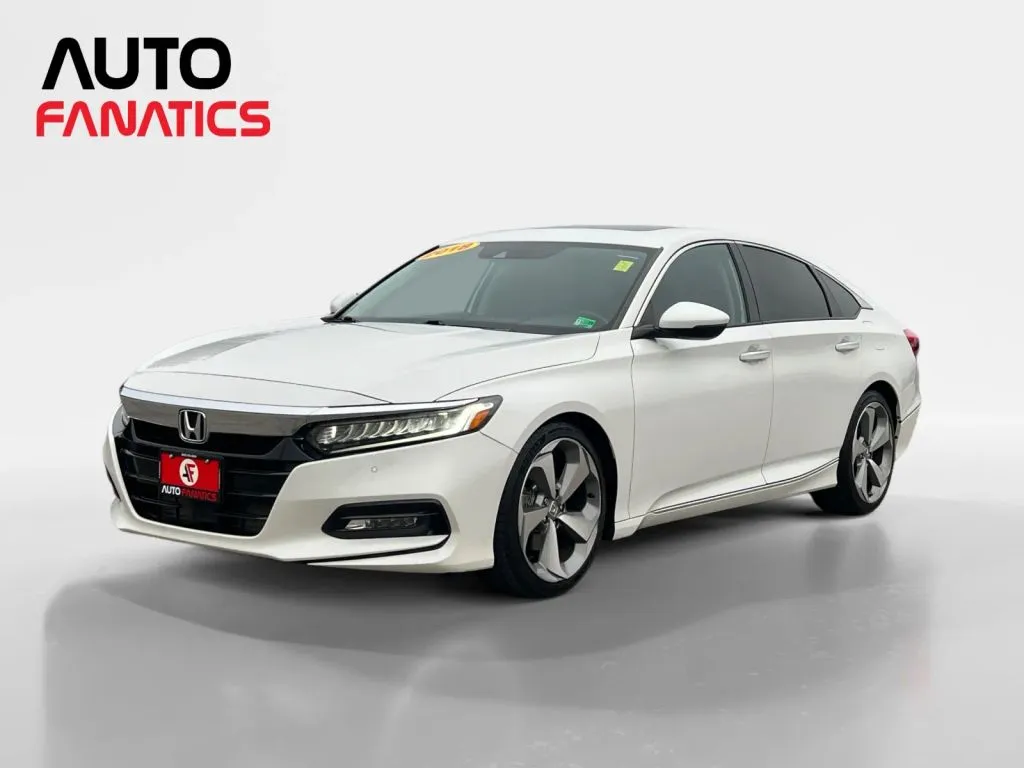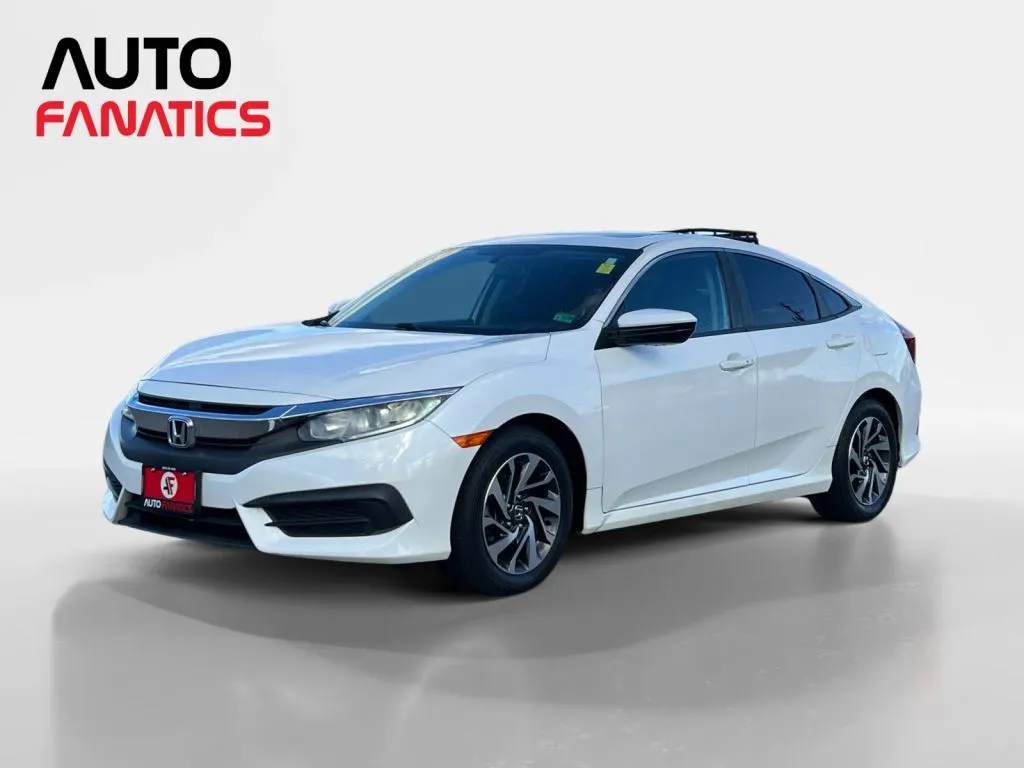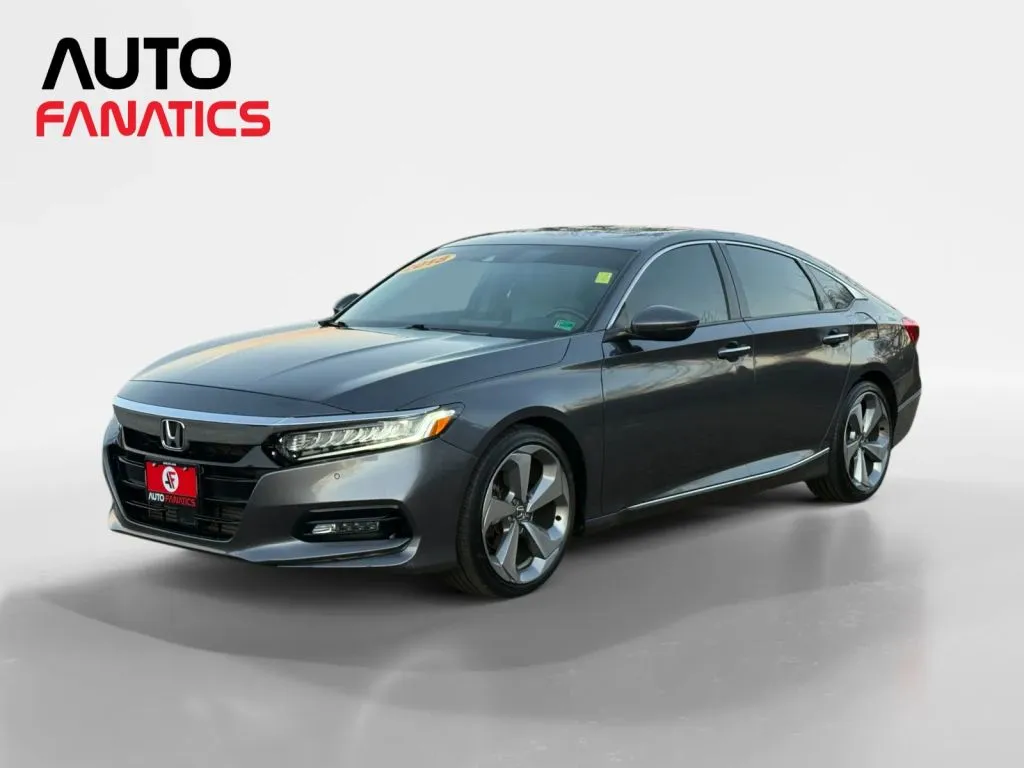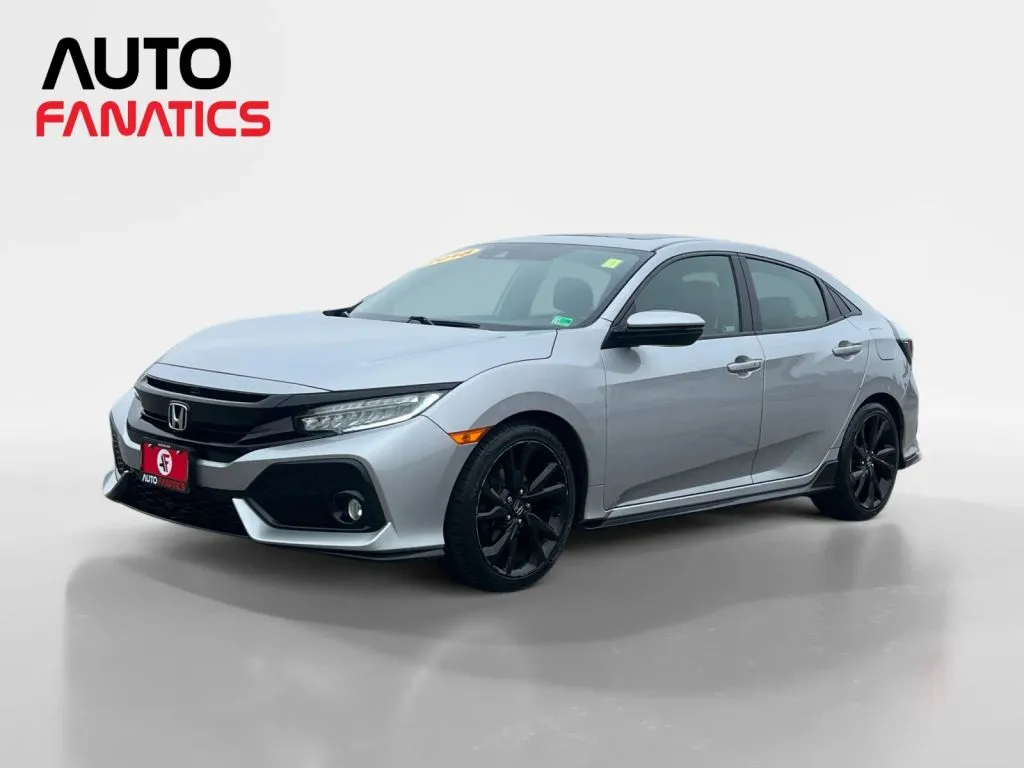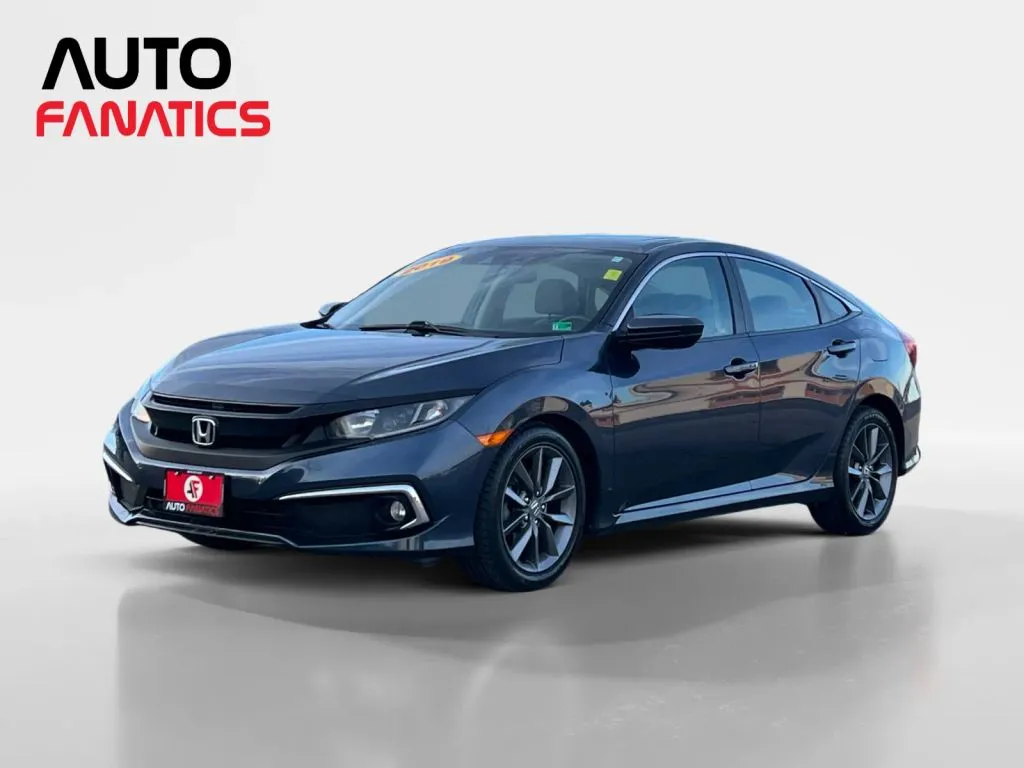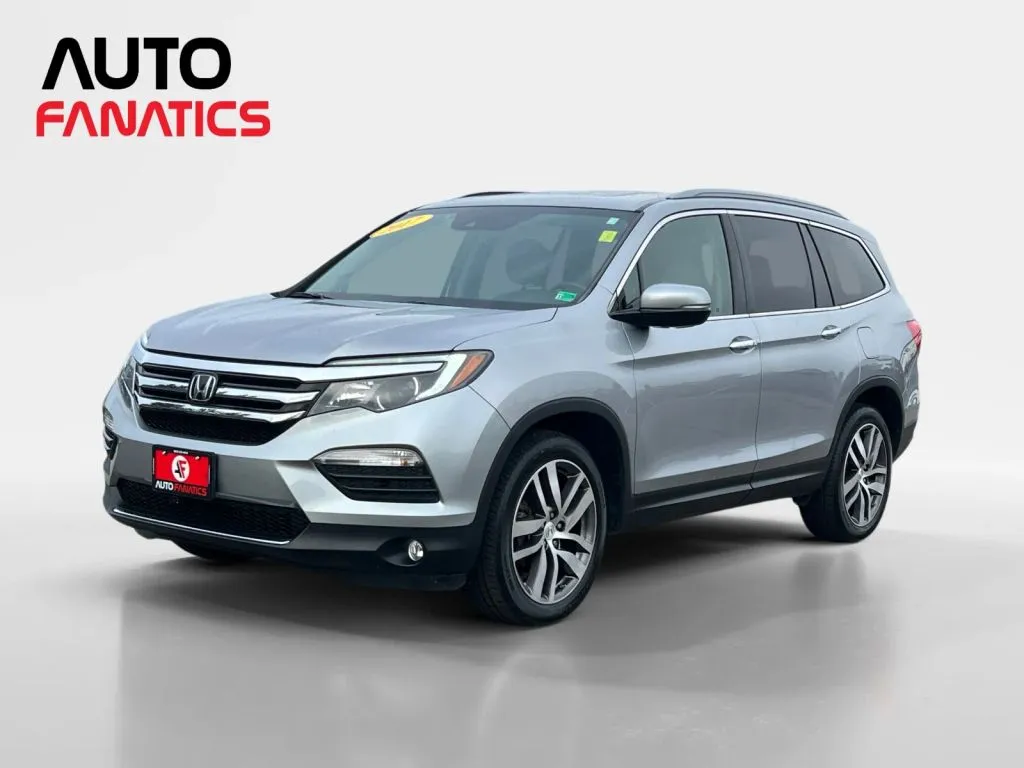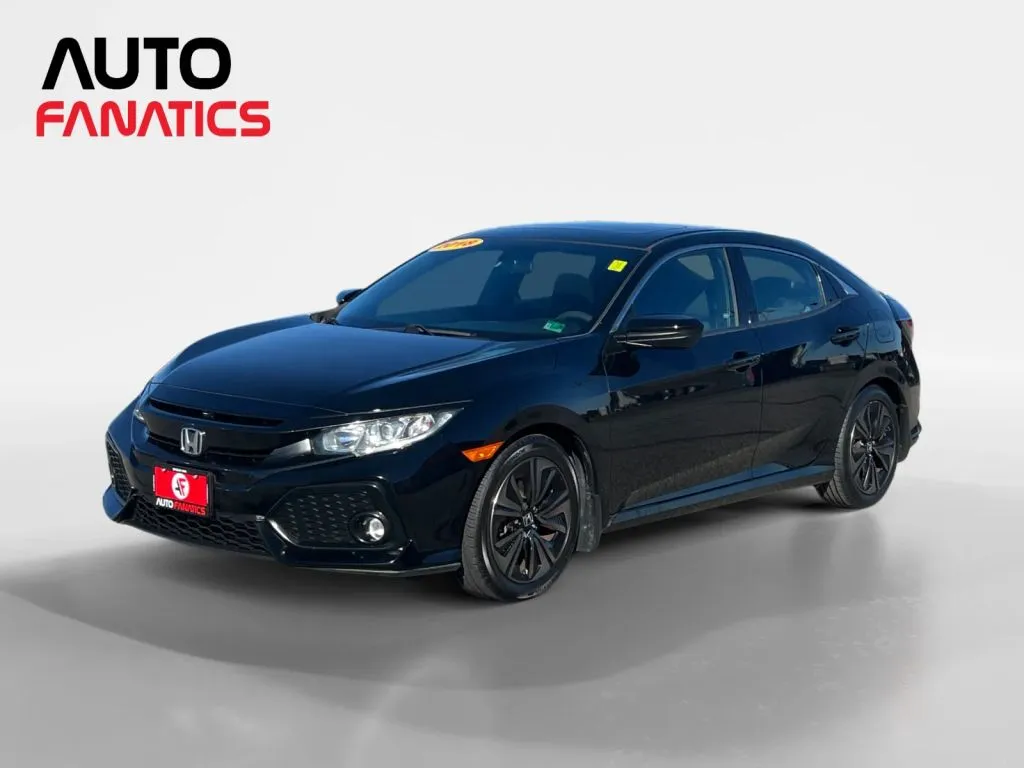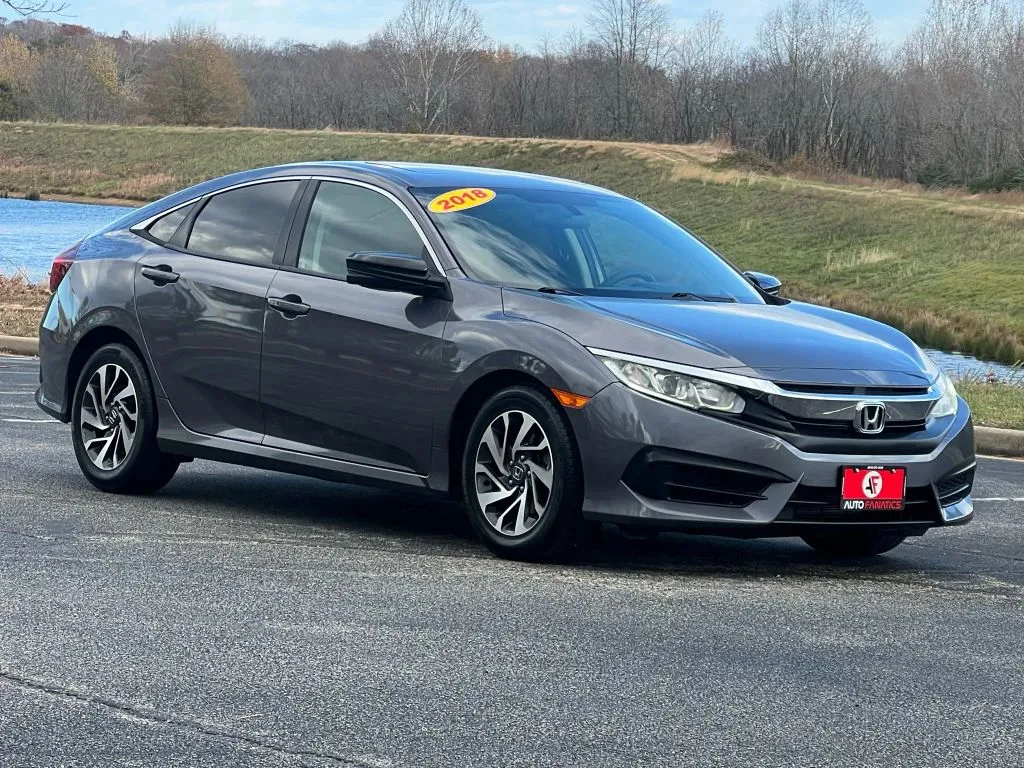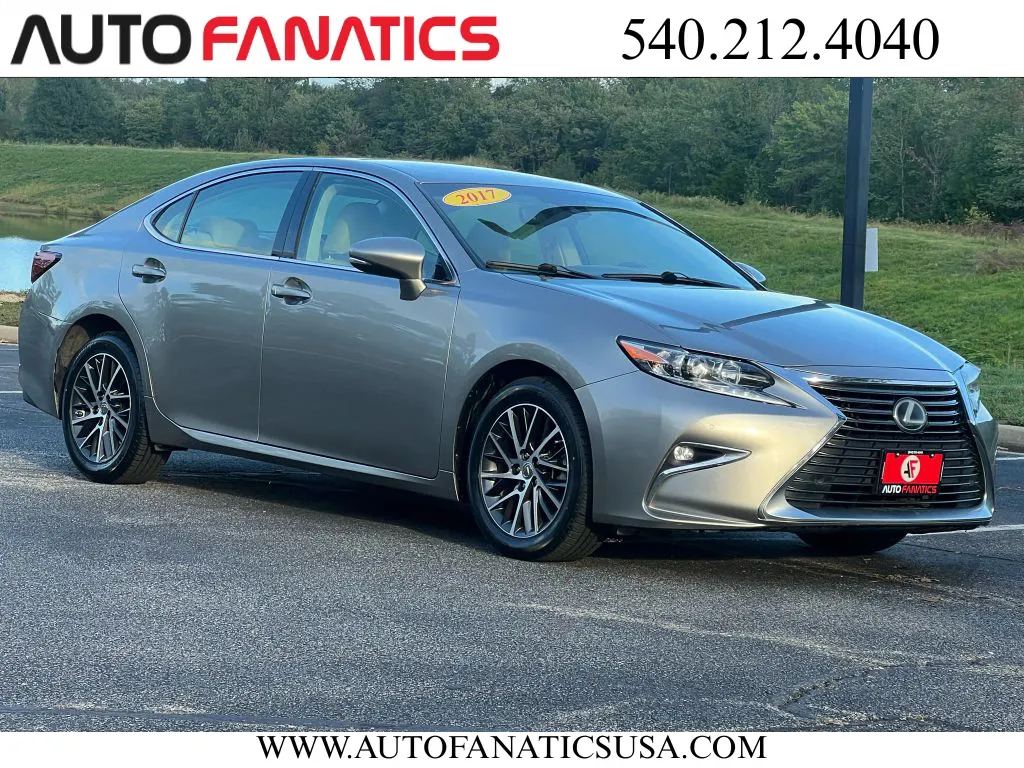How Much Will My Car Payment Be? 7 Factors to Know
At Auto Fanatics, we’ve earned over 500 five-star reviews because we believe in a transparent, no-pressure car-buying experience. A huge part of that is making sure you feel completely comfortable with your financing. We know the question "how much will my car payment be?" can feel daunting, which is why we want to pull back the curtain on the process. This guide breaks down everything in simple terms, from APR to down payments. We want to give you the tools and understanding to see exactly how the numbers work, so you can feel just as good about your payment as you do about your new car.
Key Takeaways
- Control the Four Core Components: Your monthly payment is shaped by four key factors: the loan amount, interest rate, loan term, and taxes. You can directly influence this number by making a larger down payment or taking steps to improve your credit score before you start shopping.
- Get Pre-Qualified Before You Shop: Securing a loan pre-qualification is the most powerful first step you can take. It establishes a firm budget, strengthens your negotiating position, and allows you to focus on finding the right car without any financial guesswork.
- Look Beyond the Monthly Payment: A low monthly bill from an extra-long loan term can cost you significantly more in total interest. Always consider the total cost of the loan and budget for ongoing expenses like insurance and maintenance to ensure your new car fits your financial life comfortably.
What Determines Your Monthly Car Payment?
Figuring out your potential monthly car payment can feel like solving a puzzle. It’s not just about the sticker price; several key factors come together to determine that final number. Understanding these elements puts you in the driver’s seat, giving you the confidence to build a budget that works for you. When you know what goes into the calculation, you can adjust different variables to find a payment plan that fits your life. Let’s break down the four main components that shape your monthly payment.
Purchase Price and Down Payment
The starting point for your auto loan is the vehicle's purchase price. A less expensive car will naturally lead to a smaller loan and a lower payment. After you find a vehicle you love in our inventory of used cars, your down payment becomes the next crucial piece. This is the amount of cash you pay upfront. A larger down payment directly reduces the amount you need to borrow. For example, putting $5,000 down on a $20,000 car means you only need to finance $15,000. This not only lowers your monthly payment but also reduces the total interest you'll pay over the life of the loan.
Interest Rate and Credit Score
Your interest rate is one of the most significant factors influencing your payment. It’s the percentage the lender charges you for borrowing money, and it's heavily tied to your credit score. A higher credit score generally shows lenders you have a strong history of managing debt responsibly, which can qualify you for a lower interest rate. Even a small difference in the rate can save you hundreds or even thousands of dollars over time. The best way to see what you might qualify for is to get pre-qualified, which gives you a clear picture of your potential interest rate without impacting your credit score.
Loan Term Length
The loan term is simply how long you have to repay the loan, typically expressed in months. Common terms are 36, 48, 60, 72, or even 84 months. A shorter term, like 48 months, means higher monthly payments, but you'll pay off the car faster and accumulate less interest. A longer term, like 72 months, will give you a more manageable monthly payment, but you'll pay more in total interest over the loan's duration. You can experiment with different scenarios using a car loan calculator to find a balance between a comfortable monthly payment and your long-term financial goals.
Sales Tax and Fees
The price you see on the window sticker isn't the final amount you'll finance. You also need to account for sales tax, title fees, and registration costs. In Virginia, these additional expenses can add a significant amount to your total. Most buyers choose to roll these costs into their auto loan. While convenient, this increases the total principal you’re borrowing, which in turn slightly increases your monthly payment. It’s important to factor these costs into your budget from the beginning to avoid any surprises when it’s time to sign the paperwork.
How Your Credit Score Impacts Your Interest Rate
Think of your credit score as your financial report card. Lenders look at it to understand how reliably you’ve managed debt in the past. A higher score shows them you’re a lower-risk borrower, and they’ll often reward you with a lower interest rate. This is a huge factor in your monthly payment because a lower rate means you pay less in interest charges over the life of your loan, which can save you hundreds or even thousands of dollars.
Your credit score is one of the most significant factors that determines your auto loan interest rate. A strong score can open the door to better loan terms and a more affordable monthly payment. But don’t worry if your credit isn’t perfect. Our team at Auto Fanatics has experience working with all kinds of credit situations. We’re committed to helping you understand your options and finding a financing solution that fits your budget. It’s part of the transparent, supportive experience that has earned us over 500 five-star customer reviews. We want to see you drive away happy, and that starts with a payment plan you feel confident about.
Fixed vs. Variable Rates: Which Is Better?
When you start looking at loans, you’ll see terms like "fixed rate" and "variable rate." For an auto loan, a fixed rate is almost always the way to go. It means your interest rate is locked in for the entire loan term, so your payment will be the same every single month. This makes budgeting simple and predictable. A variable rate can change over time with the market, meaning your payment could unexpectedly go up.
When comparing offers, always look at the Annual Percentage Rate (APR), not just the interest rate. The APR gives you the true cost of borrowing because it includes the interest rate plus any lender fees. This allows you to make a true apples-to-apples comparison between loan options. You can use a car loan calculator to see how different APRs affect your total cost.
Why You Should Get Pre-qualified
Getting pre-qualified for a car loan is one of the smartest moves you can make before you even start browsing for a vehicle. It’s a simple process where a lender gives you an estimate of how much you can borrow and at what interest rate, based on a quick review of your finances. This gives you a realistic budget to work with, so you can shop with confidence and focus on the cars, trucks, and SUVs in your price range.
The best part? Getting pre-qualified usually only requires a "soft" credit inquiry, which won’t affect your credit score. It’s a no-pressure way to understand your buying power. At Auto Fanatics, you can get pre-qualified with Capital One right on our website, giving you a clear picture of your options before you visit our dealership.
Tips to Improve Your Credit Score
If your credit score isn't where you'd like it to be, taking a few steps to improve it before you apply for a loan can make a real difference in the interest rate you receive. Even a small increase in your score can lead to significant savings. Start by pulling your credit report to check for any errors—disputing inaccuracies can sometimes provide a quick improvement.
Beyond that, focus on two key habits: paying all your bills on time and keeping your credit card balances low. Your payment history is the biggest factor in your score, so consistency is key. A lower credit utilization ratio (the amount of credit you're using compared to your total limit) also shows lenders you can manage credit responsibly. Taking these steps now can put you in a much stronger position when you’re ready to get approved for financing.
Plan a Smart Down Payment
Your down payment is one of the most powerful tools you have for shaping your auto loan. It’s the amount of cash you pay upfront, and it directly impacts how much you need to borrow. A larger down payment means a smaller loan, which can lead to a lower monthly payment and less interest paid over the life of the loan. Think of it as your first big step toward owning your next vehicle and setting yourself up for financial success. Planning this part of your purchase carefully can make a huge difference in your overall budget and peace of mind. At Auto Fanatics, we believe in transparency, and helping you understand these key financial decisions is part of our commitment to a five-star experience.
How Much Should You Put Down?
A common guideline is to aim for a down payment of at least 10% for a used car. So, for a $20,000 SUV, that would be $2,000. However, the best answer is: put down as much as you comfortably can without draining your emergency savings. The more you pay upfront, the less you'll have to finance. This simple step can save you a significant amount in interest charges down the road. A great way to see the impact of different down payment amounts is to experiment with a car loan calculator. It allows you to plug in different numbers and instantly see how your monthly payment changes.
The Perks of a Larger Down Payment
Putting more money down from the start has two major benefits. First, it lowers your monthly payment, making it more manageable for your budget. Second, it reduces the total amount of interest you'll pay over the course of the loan. For example, on a $25,000 loan, increasing your down payment from $2,500 to $5,000 could save you hundreds of dollars in interest. A larger down payment also helps you build equity in your vehicle faster, which means you owe less than the car is worth—a great financial position to be in. It’s a smart move that pays off every single month.
Using Your Trade-in as a Down Payment
Have a car you’re ready to part with? Your current vehicle’s trade-in value can serve as a fantastic down payment. It’s a simple way to reduce the purchase price of your next car without dipping into your savings. Plus, in Virginia, you only pay sales tax on the difference between the price of your new car and the value of your trade-in, which can lead to even more savings. If you're curious about what your car might be worth, you can easily get a trade-in value online. It’s a quick, no-obligation way to see how your current car can help you get into your next one.
Should You Consider Gap Insurance?
Gap insurance is something to consider, especially if you’re making a smaller down payment. It covers the "gap" between what you owe on your auto loan and what the car is actually worth if it's declared a total loss after an accident or theft. A car's value can depreciate quickly, and without gap coverage, you could be stuck making payments on a car you can no longer drive. This type of coverage offers peace of mind, ensuring you won't face a major financial setback. It’s one of several automotive protection plans that can safeguard your investment for years to come.
How to Calculate Your Car Payment
Figuring out your potential monthly car payment is one of the most important steps in the car-buying process. It transforms a big sticker price into a manageable number that fits your budget. Understanding how this number comes together gives you control and confidence when you’re ready to buy. It’s all about making sure there are no surprises down the road.
At Auto Fanatics, transparency is at the core of everything we do—it’s how we’ve earned over 500 five-star customer reviews. We want you to feel completely comfortable with your financing, so let’s walk through how to calculate your payment.
The Basic Car Payment Formula
You don’t need to be a math whiz to understand the basic formula for a car payment. It simply combines the total loan amount, the interest rate, and the length of the loan term. The key is knowing what goes into that "total loan amount." It’s not just the car's price tag. The calculation also includes your down payment, the value of your trade-in, any remaining balance on your trade-in, and sales tax. Each of these elements adjusts the final amount you need to finance, which directly impacts what you’ll pay each month.
Let an Online Calculator Do the Math
The easiest way to get a clear picture of your potential payment is to let a tool do the heavy lifting. An online car loan calculator is your best friend here. You can plug in different numbers to see how they change the outcome. For instance, you can see how a larger down payment lowers your monthly bill or how a shorter loan term affects the payment. It’s a fantastic, no-pressure way to experiment with different scenarios and find a monthly payment that feels right for your financial situation before you even step into the dealership.
APR vs. Interest Rate: What's the Difference?
You’ll see two terms when you look at loans: interest rate and APR. They’re related, but not the same. The interest rate is the percentage a lender charges you for borrowing money. The Annual Percentage Rate (APR), however, gives you the full picture. It includes the interest rate plus any lender fees or extra costs rolled into the loan. When you’re comparing loan offers, always look at the APR. This ensures you’re making an apples-to-apples comparison of the true cost of borrowing from different lenders.
Factoring in Northern Virginia Taxes
Don’t forget about taxes and fees—they’re a part of the final purchase price. Here in Virginia, you’ll pay a Sales and Use Tax (SUT) on your vehicle. The good news is that if you have a trade-in, you typically only pay tax on the difference between the price of your new car and the value of your trade. For example, if you buy a $25,000 SUV and your trade-in is worth $10,000, you’ll only be taxed on $15,000. You can easily get your trade-in value online to help you estimate this cost more accurately.
Don't Forget These Additional Costs
When you’re focused on getting a great monthly payment, it’s easy to overlook the other expenses that come with owning a car. Thinking about these costs upfront helps you create a realistic budget with no surprises down the road. Your total cost of ownership goes beyond the sticker price and includes everything from insurance to the gas you put in the tank.
Planning for these additional expenses ensures your new-to-you vehicle fits comfortably into your financial life. Let’s break down the main costs you’ll want to factor into your budget besides the monthly loan payment itself. We’ll cover insurance, state fees, optional protection plans, and the everyday costs of fuel and maintenance. Getting a clear picture of these numbers now will make you a more confident and prepared car owner. You can start plugging these estimates into a car loan calculator to see the full picture.
Car Insurance Requirements
Before you can drive your car off the lot, you need to have car insurance—it’s required by law in Virginia. If you’re financing your vehicle, your lender will likely require you to carry "full coverage" insurance, which includes comprehensive and collision policies. This protects their investment (and yours!) from damage or theft. Insurance rates vary widely based on your driving record, age, location, and the type of car you choose. It’s a smart move to get a few insurance quotes for the specific vehicle you’re considering before you buy it. This way, you can add that exact monthly premium to your budget.
Registration and Title Fees
Another upfront cost to plan for is the fees for your vehicle’s title and registration. These are one-time charges from the state of Virginia to officially transfer the car into your name and issue your license plates. While they aren’t part of your monthly payment, they are a necessary part of the purchase process. The exact amount can depend on the vehicle's value and weight. We handle all the paperwork here at Auto Fanatics to make this step seamless for you, but it’s important to set aside funds for these DMV fees so you’re fully prepared on closing day.
Extended Warranties and Protection Plans
While our cars are meticulously inspected, an extended warranty or protection plan can offer valuable peace of mind. These plans are designed to cover the cost of unexpected mechanical repairs after the manufacturer's warranty has expired. Think of it as a safety net for your budget. While it’s an optional expense, it can save you from a major, unplanned bill later on. We offer several automotive protection plans and can walk you through the options to see if one is a good fit for you, without any pressure.
Ongoing Maintenance and Fuel
Finally, remember to budget for the day-to-day costs of driving: fuel and routine maintenance. Your fuel costs will depend on your daily commute and your car’s gas mileage. Regular maintenance like oil changes, tire rotations, and brake inspections are also key to keeping your car running smoothly and safely for years to come. Choosing a reliable, well-maintained vehicle from the start can help keep these costs predictable. That’s why we take so much pride in our wide selection of used cars, ensuring you drive away in a car you can count on.
How to Find the Best Auto Loan
Finding the right car is only half the equation—securing a great auto loan is what makes it yours. This part of the process can feel intimidating, but it’s where you can save a lot of money and set yourself up for a comfortable ownership experience. Think of it as shopping for the best deal on financing, just like you shop for the best deal on a car. When you understand your options and come prepared, you hold the power. At Auto Fanatics, we work with a network of trusted lenders to find competitive rates for our customers, but it’s always smart to know the fundamentals yourself. Taking a little time to explore your loan options ensures you’ll find a payment plan that fits your life, not the other way around. This approach puts you in the driver's seat, giving you the confidence to choose a loan that truly works for your budget and financial goals.
What Paperwork Will You Need?
Before you apply for a loan, lenders will want to see a few key documents to verify your identity and financial standing. Getting these items together ahead of time will make the process much smoother. You’ll typically need a valid driver’s license, proof of income (like recent pay stubs), and proof of residence (such as a utility bill). It’s also a good idea to have your recent bank statements handy. To get a clear idea of what loan amount you should be aiming for, you can use a car loan calculator to estimate payments based on price, your down payment, and your trade-in value. This helps you walk into the financing conversation with a solid understanding of what you can comfortably afford.
Comparing Local Lenders
You wouldn’t buy the first car you see, so why take the first loan offer you get? It pays to compare options from different lenders, including local credit unions, banks, and online financiers. A great strategy is to apply for pre-approval from a few different lenders within a two-week window. Credit scoring models typically count multiple auto loan inquiries in a short period as a single event, which minimizes the impact on your credit score. This allows you to see who offers the best Annual Percentage Rate (APR) and terms. We simplify this at Auto Fanatics by helping you get approved through our network of lending partners, ensuring you see competitive options all in one place.
What Do Your Loan Terms Mean?
When you look at a loan offer, you’ll see a few key details: the principal (the amount you’re borrowing), the APR (your interest rate plus fees), and the loan term (how long you have to pay it back). Loan terms usually range from 24 to 96 months. A shorter term, like 48 or 60 months, means higher monthly payments, but you’ll pay less in total interest. A longer term will give you a lower monthly payment, but you’ll pay more in interest over the life of the loan. There’s no single right answer—the best choice depends on finding a balance between a monthly payment you can afford and the total cost you’re willing to pay.
The Advantage of Getting Pre-approved
Getting pre-approved for a loan before you even start test-driving cars is one of the smartest moves you can make. Pre-approval gives you a firm budget to work with, so you can focus your search on vehicles you know you can afford. It also turns you into a cash buyer in the eyes of a dealership, which can give you more leverage when negotiating the final price of the car. Best of all, you can often get pre-qualified with a soft credit check, which won’t affect your credit score. It’s a no-risk way to understand your buying power and streamline the entire car-buying process.
Actionable Tips to Lower Your Monthly Payment
Once you understand the factors that shape your car payment, you can start making strategic moves to lower it. A smaller monthly payment frees up cash for other goals and reduces financial stress. The great news is that you have more control than you might think. With a bit of planning, you can find a payment that fits comfortably within your budget without sacrificing the quality of your vehicle. At Auto Fanatics, our goal is to make this process transparent and straightforward, which is why we’ve earned over 500 five-star customer reviews. These tips will help you take charge of your financing and drive away with confidence.
Weighing Short-Term vs. Long-Term Loans
The length of your loan term has a direct impact on your monthly payment. A longer term, like 72 or 84 months, will result in a lower monthly bill, which can be tempting. However, you'll pay more in interest over the life of the loan. A shorter term, typically 60 months or less, means higher monthly payments, but you’ll pay less in total interest and own your car outright much sooner. You can use a car loan calculator to see how different terms affect your payment and total cost. Finding the right balance depends on your monthly budget and long-term financial goals.
How to Negotiate a Better Price
The best way to secure a lower payment is to start with a lower purchase price. Preparation is your best friend here. Before you even visit a dealership, research the vehicles you’re interested in and get a clear idea of their market value. Knowing what you can afford and having a budget in mind gives you a solid foundation. We recommend you get pre-qualified for a loan beforehand, which shows you’re a serious buyer and helps set your price ceiling. At Auto Fanatics, we pride ourselves on a no-pressure sales approach, ensuring you get a fair, transparent price from the start.
The Benefits of Paying Off Your Loan Early
Did you know you can save a significant amount of money by paying off your auto loan ahead of schedule? Every extra payment you make can go directly toward the principal balance, reducing the total interest you accrue over time. Even small additional payments can add up. Before you commit to this strategy, it’s crucial to ask your lender if there are any prepayment penalties. Some loans include fees for early payoff, which could offset your interest savings. Our finance team is always ready to walk you through the terms of your loan so there are no surprises down the road.
How Your Car Choice Affects Your Payment
The single biggest factor in your monthly payment is the price of the car you choose. A more affordable vehicle means a smaller loan amount from the get-go. Beyond the sticker price, a larger down payment is one of the most effective tools for lowering your monthly obligation. The more you pay upfront, the less you have to borrow. This not only reduces your payment but also lowers the total interest you'll pay. A great way to increase your down payment is to value your trade-in. Applying your current car's value directly to your new purchase can make a huge difference.
Create Your Smart Payment Plan
With a clear understanding of the factors that shape your monthly payment, you can build a financial strategy that works for you. A smart payment plan isn’t just about affording the car; it’s about making sure your new vehicle fits comfortably into your life without straining your budget. This final step is all about putting the pieces together to make a confident, informed decision.
Assess Your Monthly Budget
Before you fall in love with a car, take an honest look at your finances. Your car payment is just one part of the total cost of ownership. A helpful rule of thumb is to spend no more than 10% of your monthly take-home pay on your car payment. When you add in other related costs like insurance, gas, and maintenance, your total transportation expenses shouldn't exceed 20% of your take-home pay. Following this guideline helps ensure your car is a source of freedom, not financial stress. You can use a car loan calculator to experiment with numbers and see what fits your budget.
Common Car-Buying Mistakes to Avoid
One of the most common pitfalls is focusing only on the monthly payment. It can be tempting to stretch your loan term to 72 or even 84 months to get that payment down, but this move can cost you. While the monthly amount is lower, longer loan terms almost always mean you’ll pay significantly more in total interest over the life of the loan. It’s important to find a balance between a manageable monthly payment and a loan term that saves you money in the long run.
How to Work With Multiple Lenders
You can shop for an auto loan the same way you shop for a car. To find the best deal, it’s wise to get quotes from a few different lenders. Applying for several auto loans within a two-week period typically counts as a single inquiry on your credit report, minimizing the impact on your score. This allows you to compare Annual Percentage Rates (APRs) and terms side-by-side. At Auto Fanatics, we work with a network of trusted lenders to find competitive options for our customers. You can even get approved through our secure online application to start the process.
Making Your Final, Confident Decision
Walking into the dealership with a pre-qualified loan offer is a powerful move. Getting pre-qualified helps you establish a firm budget before you even start browsing our wide selection of vehicles. It gives you a clear idea of what you can afford and shows you’re a serious buyer, all without impacting your credit score. This simple step removes uncertainty and empowers you to make your final choice with complete confidence. It’s this kind of transparent, no-pressure approach that has earned us more than 500 five-star reviews from drivers across Fredericksburg.
Related Articles
- Car Loans Calculator: The Ultimate User's Guide
- How to Use a Car Loan Payment Calculator
- How to Estimate Loan Payment on a Car: A Guide
- Monthly Car Payment Calculator: Find Your Budget
- How to Estimate Car Payment: A Simple Guide
Frequently Asked Questions
Besides the car's price, what else determines my monthly payment? Your monthly payment is shaped by three other major factors. The size of your down payment directly reduces the amount you need to borrow. The length of your loan term also plays a big role; a longer term means lower payments, but a shorter term saves you money on interest. Finally, your interest rate, which is heavily influenced by your credit score, determines the cost of borrowing the money.
How much of a down payment do I really need? While a common guideline for a used car is to put down at least 10%, the best answer is to pay as much as you comfortably can without touching your emergency savings. A larger down payment is one of the most effective ways to lower your monthly payment and reduce the total interest you'll pay over the life of the loan. It’s a powerful move that sets you up for success from day one.
Will checking my financing options hurt my credit score? This is a common concern, but you can breathe easy. Getting pre-qualified for a loan typically involves a "soft" credit inquiry, which does not affect your credit score at all. It’s a no-risk way to see what you can afford. When you formally apply for loans, lenders will do a "hard" inquiry, but credit bureaus usually count multiple auto loan inquiries within a short period as a single event, minimizing the impact.
Is it better to have a lower monthly payment or a shorter loan? This really comes down to your personal financial goals. A longer loan gives you a lower, more manageable monthly payment, which can free up cash for other things. A shorter loan means a higher monthly payment, but you'll pay off the car faster and save a significant amount in total interest. The best choice is the one that strikes a comfortable balance between your monthly budget and your long-term savings.
Why is getting pre-qualified such a big deal? Getting pre-qualified before you shop is like having a roadmap for your purchase. It gives you a clear, realistic budget so you can focus on vehicles you know you can comfortably afford. It also shows that you're a serious buyer, which can make the whole process smoother. It’s a simple step that replaces uncertainty with confidence, letting you enjoy the fun part of finding your next car.

